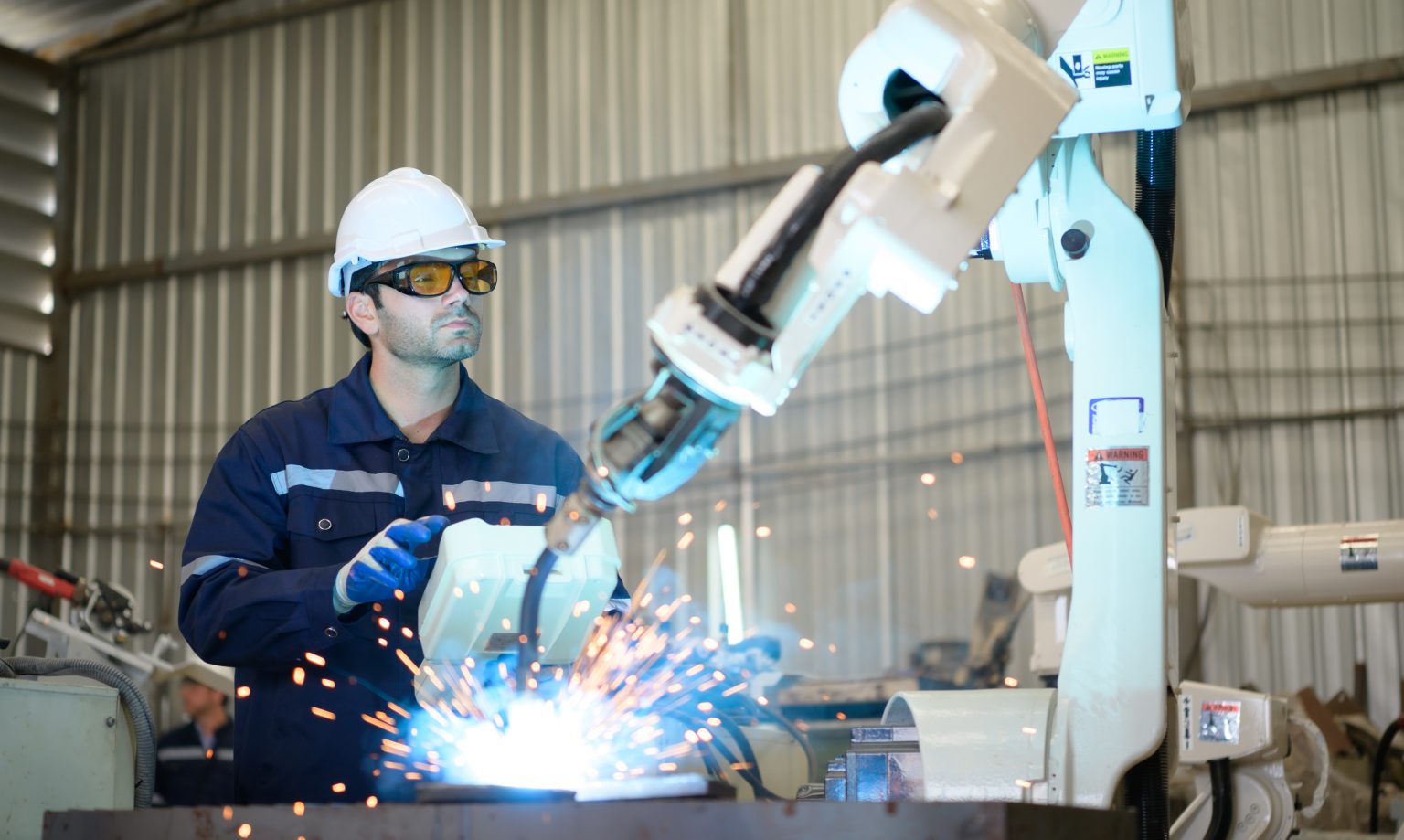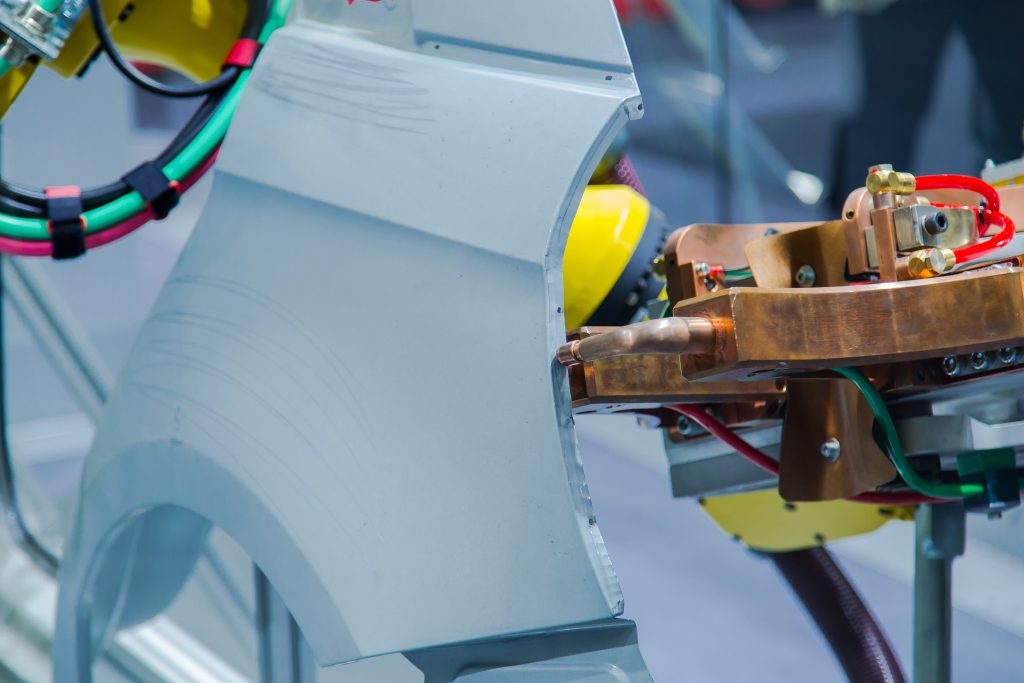What is Welding Automation?
Welding automation leverages programmable robotic systems and advanced controls to execute welding tasks with minimal human input, ensuring consistent weld quality and increased production efficiency. Semi-automated systems need operators to load and unload while the robot performs the weld. Fully automated setups manage the entire process, including inspection. Such automation can nearly triple productivity compared to manual welding for 80% arc-on time versus 30% for humans.
Automotive and aerospace industries benefit from such systems. The global welding automation market may reach $16.87 billion by 2030. Yet, implementing them entails capital investment from $50,000 to $150,000 and skilled personnel for programming and upkeep. Despite the price, welding automation is essential to contemporary industry due to its precision and efficacy.
Benefits of Welding Automation
Increased Productivity
With welding automation, cycle times shrink. A single robotic MIG station might produce around 60 inches of weld per minute. It helps eradicate manual pauses for repositioning. Moreover, programmable fixtures cut idle time. Many systems use servo-driven wire feeders, which maintain tension and decrease burn-back. High-speed camera monitoring also optimizes torch angles in real-time. The result is a far higher output volume with minimal downtime.
Improved Quality
Welding automation guarantees repeatable weld profiles with negligible spatter. Upgraded sensors track arc stability and correct for voltage fluctuations on the fly. Integrated real-time weld analytics measure penetration depth and wire feed speed. It helps circumvent porosity and undercut issues. Built-in closed-loop feedback systems spot misalignment and adjust torch position. Uniform weld beads emerge without guesswork on complex multi-pass jobs.
Cost Savings
Labor expenses drop as fewer skilled operators are needed for repetitive tasks. One operator can oversee multiple cells instead of tackling each weld manually. Less filler metal is wasted because automated parameters are exact. Lower heat distortion means fewer rework steps. Many manufacturers recoup their investment within 1-3 years. When considering downtime reductions, welding automation is remarkably more profitable in the long run.
Key Components of Welding Automation Systems
Welding Robots
Welding robots can execute multi-axis movements that maintain torch orientation within fractions of a degree. They integrate servo-driven wire feeders and pulse-width modulation to regulate heat input on thin-gauge metals. Furthermore, they have offline programming, which simulates joint paths and collision points before live production. Many models use inertia compensation algorithms to stabilize long-reach arms and decrease weld distortion. Such characteristics render them essential to welding automation in repeatable industries.
Positioners and Manipulators
Positioners and manipulators modify the weld angle while rotating, tilting, or indexing workpieces with exact increments. Tilt-rotate positioners allow 360-degree access to circumferential seams for lower re-clamping errors. Many systems incorporate robotic tracking that synchronizes table movement with the robot’s arc position. High-torque servo motors preserve stable holding forces for large assemblies with off-center mass distribution. Their stability and precision are key to welding automation since part geometry might be complex.
Sensors and Controllers
Welding expertise will be needed in the future: 360,000 additional welders are required by 2027; 90,000 are needed yearly between 2023 and 2027; and over 155,000 welders are nearing retirement. So, automation sensors and controls are key to boosting productivity and tackling labor shortages. Sensors monitor weld pool profiles, arc voltages, and wire feed tension. Laser seam tracking or through-arc sensing adjusts the torch position on the fly. It compensates for gap variations or part misalignment. Controllers process such inputs at millisecond intervals and update motion commands. Some systems log thermal input and weld bead data for post-weld analysis. Feedback loops improve welding automation via decreased faults and increased output.
Software and Programming
Welding software combines CAD data and robotic kinematics for path planning and collision avoidance. Immediate kernels run path interpolation that reacts to sensor feedback in microseconds. Many solutions offer automated parameter optimization to adjust current and travel speed for each weld pass. Simulation tools can foresee distortion on large fixtures and help engineers fine-tune clamp placements. Such software systems speed up production and provide exhaustive customization as welding automation’s digital backbone.
Applications Across Industries
Manufacturing – General Industrial Use Cases
In general manufacturing, robotic welding cells add instantaneous seam tracking, adaptive power controls, and multi-axis motion for complex geometries. High-precision sensors measure arc stability and penetration depth. The data feeds into controllers that adjust the torch position. It eliminates rework and decreases heat-affected zones. Welding automation benefits high-volume fabrication of heavy equipment frames, pressure vessels, and structural components.
Automotive – Vehicle Assembly Lines and Component Welding
In automotive production, multi-robot stations execute synchronized spot, MIG, and laser welding on chassis and body assemblies. Compact robotic arms with servo-driven weld guns guarantee consistent electrode force during numerous welds per shift. Automated vision systems recognize misalignments and instantly refine weld parameters. Such an immediate correction precludes metal fatigue in important zones. Welding automation also deals with materials, including ultra-high-strength steel and aluminum alloys, with quality tolerances.
Aerospace and Defense – Precision Welding and Safety-Critical Operations
Friction stirs and electron beam welding in aerospace and defense need temperature gradient control. Automated gantries track seams to fractions of a millimeter for dependable penetration and microstructure. Welding automation helps produce rocket engine nozzles, fuselage joints, and turbine parts that bear exciting conditions. Every weld pass is logged for post-process analysis for high-stakes mission safety. Remember, the worldwide aerospace welding machines market may expand by 4.2% from $1.385 billion in 2025 to $1.924 billion in 2033.
Ready to elevate your welding operations? Discover how TM AI Cobot delivers unmatched quality, efficiency, and ROI. Contact us today for a customized automation solution.


